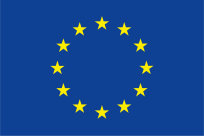Summary description
Large floodplain rivers (LFRs) are among the most threatened ecosystems on Earth and their utilization is expected to grow. Therefore, the need to develop more effective spatial prioritization tools to maintain their multifunctionality becomes increasingly important. We present a novel approach to land use design and conservation planning of LFRs and demonstrate its applicability using a case study for the Danube River, Central-Europe. Specifically, we use indicators of habitat naturalness and complexity to define four main land use functions for LFRs: (1) relatively intact areas with high habitat complexity, which are of high priority for conservation (C), (2) degraded and simplified areas, which are not suited for conservation, but for human utilization (HU), (3) relatively natural areas with low habitat complexity, which are suited both for conservation and for sustainable use of goods and services (LS), (4) degraded areas with relatively high habitat complexity potential, which should be used for rehabilitation (R). While C and HU spare land primarily for conservation and for human utilization, respectively, categories LS and R share land both for biodiversity conservation and for human use and well-being. Results of the case study show that the different land use functions did not clearly separate spatially along the evaluated segment, but distributed relatively equally. Area weighted indices highlighted the importance of large floodplains, while non-weighted indices indicated the importance of many smaller segments with narrow floodplain riparian zone, which can still be important for conservation or rehabilitation purposes. Our multiscale analysis revealed how land use categorizations depend on index use, index weightings and spatial resolution of land use function maps, which should be considered by management. The suggested methodology provides a transparent framework to any stakeholder groups on how to plan out management actions in the context of land conservation and ecosystem services delivery of LFRs.
License
Science of The Total Environment, 138441.

